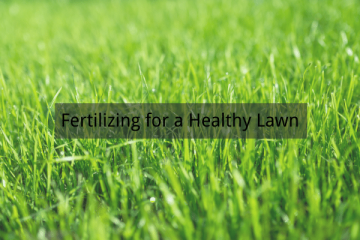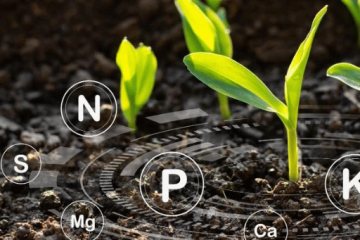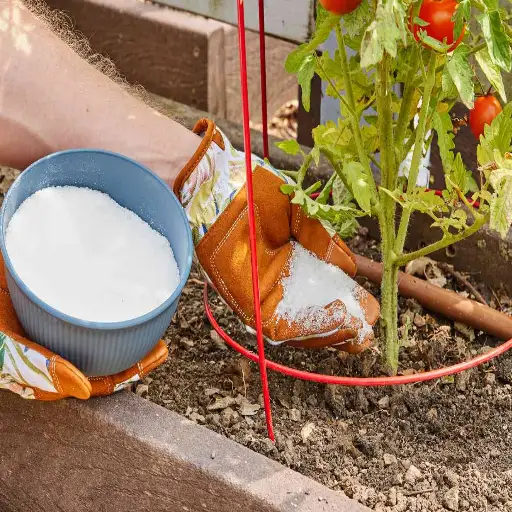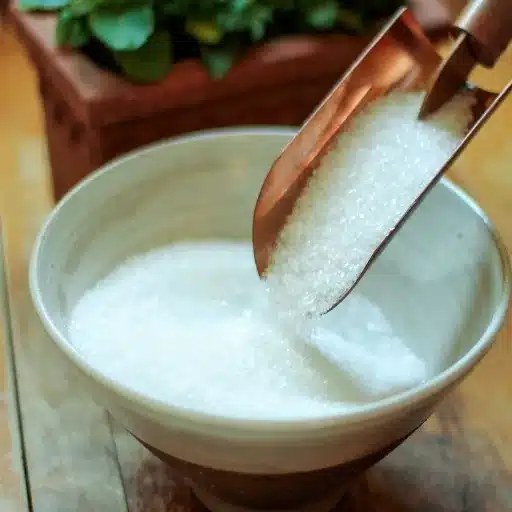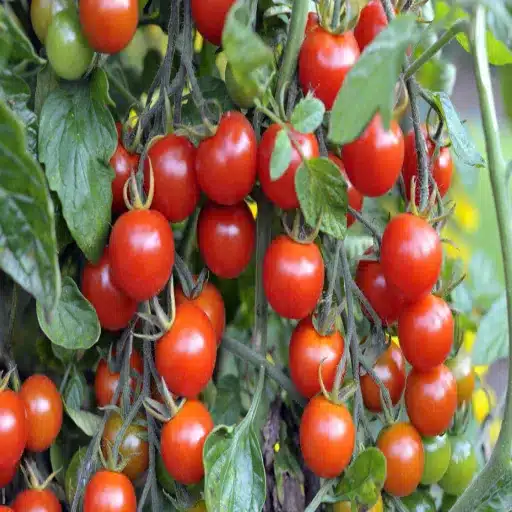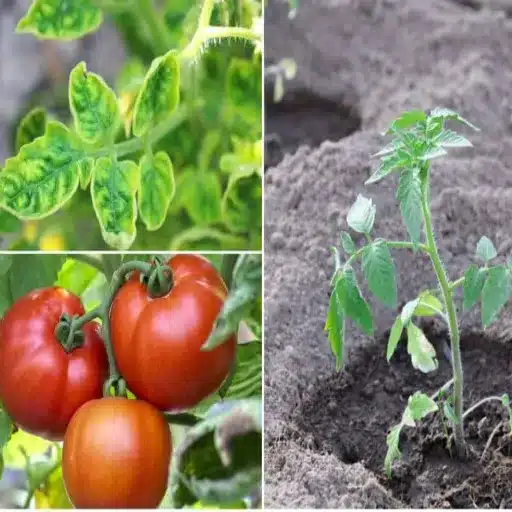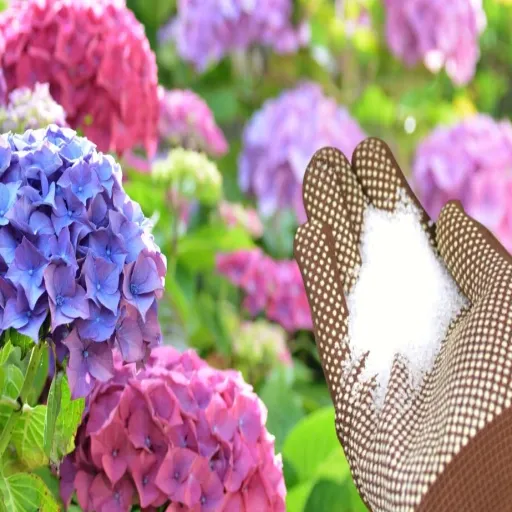Epsom salt, a naturally occurring compound of magnesium and sulfate, has gained significant attention for its numerous benefits in gardening. Used correctly, it can enhance plant health, improve soil composition, and contribute to robust growth. This article explores the applications of Epsom salt in gardening, detailing its advantages and the science behind its effectiveness. From improving nutrient absorption to addressing specific deficiencies in plants, we’ll provide a step-by-step guide on how to incorporate Epsom salt into your gardening routine. Whether you’re a seasoned gardener or a beginner, this guide aims to equip you with the knowledge to maximize your garden’s potential.
How Does Epsom Salt Benefit Your Garden?
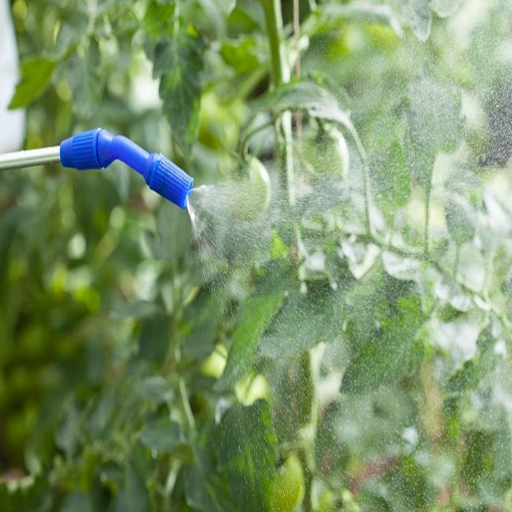
Understanding the Benefits of Epsom Salt for Plants
Epsom salt, chemically known as magnesium sulfate (MgSO₄), provides two essential nutrients for plants—magnesium (Mg) and sulfur (S). Magnesium is a critical component of chlorophyll, enabling photosynthesis, while sulfur aids in protein synthesis and enzyme activity.
- Better Uptake of Nutrients: Epsom salt contains magnesium which enhances the utilization of other nutrients such as nitrogen and phosphorus which are important for plant growth. It serves as a cofactor for many enzymes that require magnesium for nutrient metabolism.
- Increased Flowering and fruiting: Magnesium enhances the flowers and fruits’ yield as it helps in energy movement within the plant, which improves the yield quality.
- Correction of Magnesium Deficiency: The common signs of magnesium deficiency show as yellowing of leaves (chlorosis) and poor growth. Epsom salt effectively treats magnesium deficiency when applied at 1-2 tablespoons per gallon of water.
- pH Neutral: Epsom salt does not affect the pH of soil, hence can be used in neutral, alkaline, or acidic soils without changing the balance within the soil.
Scientists encourage gardeners to use these tips and enable better plant health when using Epsom salt under the correct dosage and application.
Why Use Epsom Salt in the Garden?
Epsom salt, chemically known as magnesium sulfate (MgSO₄·7H₂O), offers a wide range of benefits for garden plants due to its magnesium and sulfur content — two essential nutrients for healthy plant growth. Magnesium plays a key role in chlorophyll production, which is critical for photosynthesis, while sulfur contributes to the synthesis of key amino acids and proteins.
- Enhances Nitrogen and Phosphorus Absorption: Magnesium Helps in the absorption of key N and P nutrients critical for optimal plant growth.
- Boosts Photosynthesis Magnesium: Epsom Salt Increases the quantity of chlorophyll which is the green pigment contained in plants essential for photosynthesis.
- Removes Sulfur Lack: Sulfur helps in the activation of enzymes and the side synthesis of proteins. Magnesium sulfate provides sulfur in an easily assimilated form.
- Encourages Flower and Fruit Development: Promotes Flower and Fruit Set Some plants, such as tomatoes, butter peppers, and roses undergo magnesium-induced hyperstimulation resulting in enhanced flowering activity and increased fruit set.
- No Increase or Decrease in the Soil pH Level: Epsom salt does not change the equilibrium in the soil which makes it ideal for soils with various pH levels.
Understanding these specific details can help gardeners who use Epsom salts take care of their plants while allowing the soil to maintain its balance.
How to Add Epsom Salt to Your Garden?
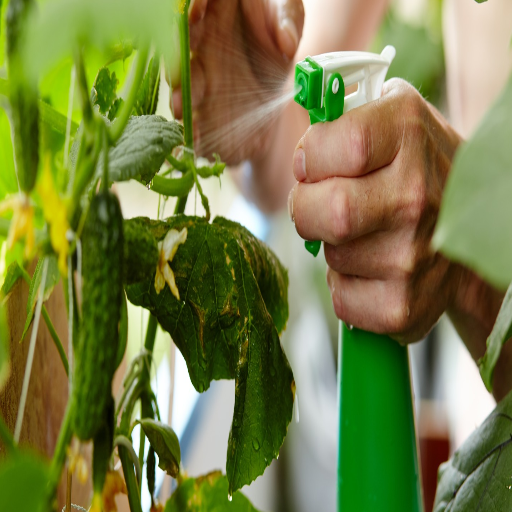
Steps to Apply Epsom Salt to Garden Soil
- Measure Soil Test for Magnesium: One, I can use either a professional soil kit or a home testing kit. The approach chosen will ensure that magnesium level is neither excess nor deficient. Generally, deficient levels of magnesium in soil fall below 25 ppm.
- Calculate the Suggested Dosage: The chosen dosage for Epsom salt is 1-2 tablespoons per gallon of water which is meant for soil application or foliar sprays. This dosage is considered appropriate to ensure optimal Mg delivery.
- Apply Sprays For Foliar Use: To increase Epsom salt absorption, one must apply this solution in the morning as these temperatures greatly enhance the absorption. To reach optimal results, half a tablespoon should be combined with a gallon of warm water before applying directly to the leaves and stems of the plants.
- Soil Application Method: Another way to increase Epsom salt bioavailability is by sprinkling half a tablespoon around the perimeter of each plant, and subsequently watering it. For larger pieces of land, combining 1 pound of Epsom salt for every 100 square feet in soil will ensure planes receive weed-free nutrients as well.
- How Many Times You Need to Apply: Application of the Epsom salt solution should be done every 4-6 weeks during the growing season for optimal magnesium maintenance, especially when growing heavy feeders such as tomatoes, roses, and peppers. It is crucial to observe the growth of the plants so that correct changes can be effected where needed.
By taking these specific steps, I can successfully incorporate the use of Epsom salts into the plant without disrupting the chemical makeup of the soil.
How Much Epsom Salt Should You Add?
The appropriate amount of Epsom salt to add is determined using the recommended suggestions for each plant and soil type. For regular garden use, I mix about a tablespoon of Epsom salt with water per gallon. This aids in greatly supplying the soil with magnesium and sulfur. For more specific situations:
- Tomatoes and Peppers: I employ foliar spray every two to four weeks, using a tablespoon of Epsom salt with a gallon of water mixture. This helps combat magnesium insufficiency and helps during the fruiting phase.
- Roses: By adding half a cup of Epsom salt, sprinkling it around the base of the bush, and watering the soil amply, I can aid in the marvelous blooming of roses.
- House Plants: For these plants, I can mix two tablespoons of Epsom salt in a gallon of water and use this during their regular watering schedule to aid in proper growth.
The amount of Epsom salt used was based on these specific plants and their magnesium absorption needs. The dosage can be fine-tuned over time based on plant health.
Understanding Soil and Water Requirements
I concentrate on several technical aspects that aid in the effective management of soil and water for plants.
- Soil pH Levels: Most plants flourish between a slightly acidic to neutral pH range of 6.0 to 7.0. Thus pH balance is critical to maintain. A soil pH tester enables me to monitor and adjust pH to the desired level with amendments like lime (to raise pH) or sulfur (to lower pH).
- Drainage and Texture: Good soil must have the right balance to sustain hydration and also prevent root rot. For this reason, I check the soil texture regularly and add organic matter like compost to ensure that it retains moisture but allows excess water to drain.
- Watering Frequency: The kind of plant and its soil type greatly inform the proper soil moisture range. For instance, Plants in sandy soils, tend to require more watering since the soil drains too much too fast. Clay-heavy soils, however, tend to retain moisture more often, thus, needing far less tending to. I maintain the ideal range, often falling between 20% and 60%. To measure soil moisture, I use a moisture meter.
Using these factors, I can determine and justify every action that is needed for maintaining and prolonging a healthier life in plants.
Can Epsom Salt Enhance Tomato Plants?
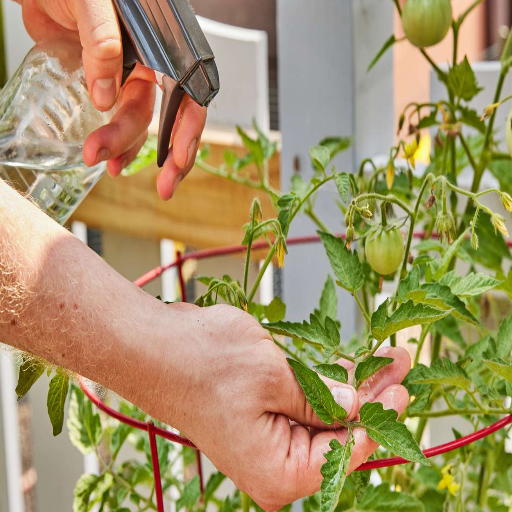
Using Epsom Salt for Tomato Plants
Epsom salt can benefit tomato plants, but it is based on particular plant requirements and soil health. The magnesium sulfate within Epsom salt helps manage magnesium deficiencies, which is quite common in conjunction with tomatoes. Unresolved, magnesium deficiencies can indeed result in yellowing leaves or blossom end rot. I reserve my application of Epsom salt until after I have confirmed magnesium deficiency through a soil test, as overspreading can disrupt the balance of nutrients.
- Dosage: For soil application or foliar sprays, dissolve 1 tablespoon of Epsom salt per gallon of water. As with anything, moderation is key. Overuse can lead to high magnesium content, hindering one’s ability to absorb calcium.
- Application Frequency: When deficiencies are apparent, every 3-4 weeks during the growing season works best.
- Timing: Early morning or late evening is preferred for foliar sprays or to avoid sun scorch and improve absorption.
- pH Consideration: Soil pH should be around 6.0-6.8 for best nutrient absorption, in particular, magnesium, which is less abundant in highly acidic or alkaline soils.
To prevent causing harm to the tomato plants or inducing nutrient imbalance, I ensure that Epsom salt is applied carefully through monitoring and specific guidelines.
How to Measure the Right Amount of Salt Per Gallon of Water
For my tomato plants, to get the correct dosage of Epsom salt to water, I follow the following steps:
- Standard Dosage: Use 1 – 2 tablespoons (15-30 grams) of Epsom salt per gallon of water. This concentration is suggested for Magneisum or sulfur deficient tomatoes ensuring none of them are under or over-supplemented.
- Measurement Tools: Utilizing one standard measuring spoon and one clean container ensures accuracy. Different types of measuring devices can lead to mixed results.
- Mixing Process: To ensure uniform coverage and prevent salt build-up from clogging the spray nozzles, stir thoroughly. If using a foliar spray, ensure saturation of salt solution spray avoid clogging.
- Adjustment Criteria: Adjust the concentration if there are signs of over-fertilization such as scalp and salt crust. When wilting occurs, do not hesitate to take action due to the plant’s response.
- Supporting Evidence: There is properly balanced evidence about the set dosage for tomatoes in the majority of growing conditions with proper safe application.
Staying within these factors whilst adjusting based on the plant response, ensures maximum nutrient absorption and health of the soil and foliage.
Dealing with Magnesium Deficiency in Tomato Plants
In attempting to solve the lack of magnesium in tomato plants, diagnosis verification begins by confirming symptoms like interveinal chlorosis in older leaves, while ruling out possibilities like antagonism between nutrients or a low pH. Considering the growth needs of tomatoes, I do a soil examination to check for magnesium concentrations of around 30-60 parts per million.
- Foliar Application: As a symptom alleviation strategy, I apply the 2% magnesium sulfate solution as a foliar topdressing for rapid magnesium absorption. The approach is pioneered for functioning within the constraints of soil.
- Soil Amendment: For more long-standing correction, I mix 5 to 10 pounds of dolomite lime per 100 square feet of soil, where the primary goal is to buffer pH conditions as well as replenish magnesium. For harsher approaches, Epsom salt at the concentration of 1 tablespoon per gallon of water may be used as a drench for soil.
- Environmental Adjustments: I also attempt to control excessive increases in potassium or calcium intake to ensure there is soil pH control as well as to facilitate magnesium uptake, where the optimal ranges lie between 6.0 and 6.5.
With such measures in place and careful monitoring of plant actions taken afterward, I ensure that concentration level and nutrient balance are maintained which helps in overall plant consistency.
Is Epsom Salt Suitable for Houseplants?
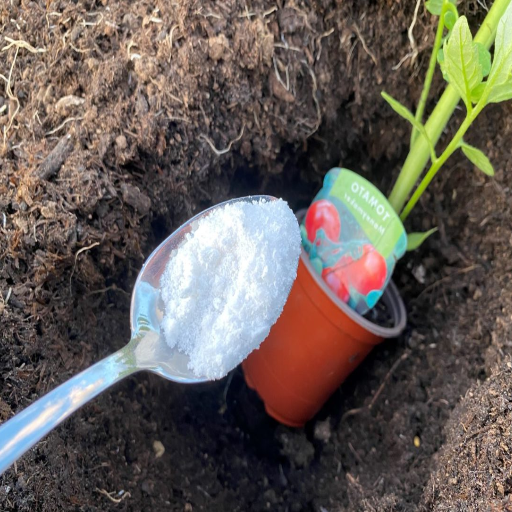
Use of Epsom Salt for Potted Plants
Epsom salt can potentially benefit containerized plants as long as it is within the reasonable bounds of caution and technical usage. Epsom salt, which is magnesium sulfate (MgSO₄), provides additional magnesium and sulfur that are important for plant growth. Its use is especially beneficial in cases of magnesium deficiency that express themselves through yellow leaves, interveinal chlorosis, and retarded growth.
- Dosage: One tablespoon of Epsom salt can be diluted in 1 gallon of water and applied once a month as a soil drench. This concentration is sufficient to meet magnesium needs every month and not harm the plants.
- Its pH Level Effect: Magnesium sulfate has no impact on soil pH levels since it is neutral and therefore, pot plants sensitive to pH can be taken care of easily.
- Appropriate Plants: Additional magnesium improves the activity and productivity of certain crops, such as tomatoes, peppers, and even roses.
- How To Apply: It can be sprayed directly on the foliage or the soil as a solution to magnesium deficiency. The method used to spray dictates how severe the solution is after foliar deficiencies.
About the application, it is important to pay attention to the plants so that there is no evidence of salt and over-fertilization which is damaging in the case of potted plants. They can also make precise corrections without impairing the health of the plants by testing the nutrient levels concentration in the soil from time to time.
How Houseplants Can Benefit from Epsom Salt
Integrating Epsom salt, or magnesium sulfate (MgSO4·7H2O) as it’s known in the scientific community, into the routine care of houseplants can drastically improve their health. This special type of salt provides both magnesium and sulfur which are key in chlorophyll formation as well as nutrient harvesting. Adding Epsom salt will eliminate magnesium insufficiency, which usually manifests itself through growth stunting and leaf yellowing.
- Increased Production of Chlorophyll: Magnesium is an essential element in every chlorophyll molecule and assists in boosting photosynthesis in plants. Thus, a magnesium-rich environment increases the efficacy of a plant’s sunlight utilization.
- Better absorption of nutrients: Magnesium, in addition to its primary function, acts as a donor of nitrogen and phosphorus. As a result, plants can maximize the use of Epsom salt.
- Boosted root development: Sulfur is one of the main contributors responsible for the formation of deep root systems and also aids in combating environmental plant stress.
- Disease resistant: When used routinely, Epsom salt makes the leaves greener and blooms more colorful, making them more vivid.
These guidelines on the application of Epsom salt can significantly improve the health and life expectancy of houseplants while minimizing the risk of over-fertilization.
Common Mistakes When Using Epsom Salt on Plants
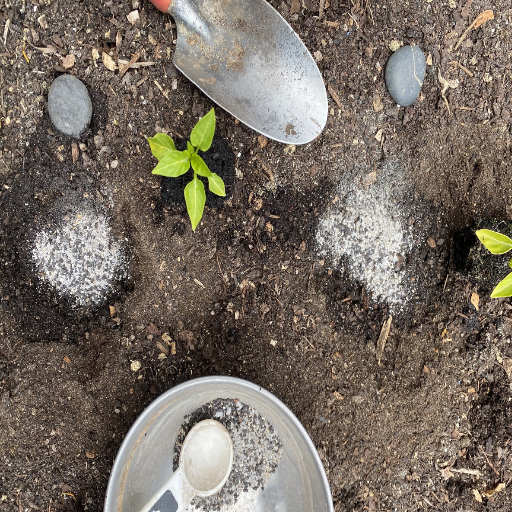
Signs of Using Too Much Epsom Salt
Using too much quantity of Epsom salt may negatively affect plant growth in various ways due to an imbalance of soil nutrients and high magnesium concentration. Common ones are:
- Leaf yellowing and scorching: A high concentration of magnesium can disrupt nutrient absorption such as calcium or potassium, which can subsequently cause chlorosis and leave scorching.
- Stunted growth: Over-application of nutrients can imbalance nutrients and thus hamper a plant’s development and growth rate.
- Accumulation of residual salts: An excess application of salts gives rise to salt concentration which damages root systems over time through hampered water absorption. Over time, salt concentration in the soil increases as water is consumed.
- Reduced fruit or flower performance: Due to skewed nutrient concentration, plants will demonstrate lower blooms or poor yields.
These guidelines, if followed can minimize the damage caused by overuse of Epsom salts and ensure the health of your plants.
Understanding What Plants Don’t Like
To my perspective, most plants appear to be uncomfortable with biotic and abiotic environmental factors that stray too far from their ideal growth parameters, like the optimal soil composition, water availability, and balanced external environment without exposure to excessive chemicals.
- Disproportionate Concentration of Nutrients: Overly Essential magnesium concentration can be detrimental to nutrient absorbance due to the excessive bio-magnesium intake. An example is chlorosis symptoms that arise from magnesium levels above 50 ppm in soil due to the impairment of potassium and calcium absorption working in conjunction.
- Poor Watershed Management Practices: A lack of agricultural drainage or too much irrigation leads to excess waterlogging, which further reduces the oxygen content within the root zone. Particularly, root rot sets in breaking down the root structure where the existing soil oxygen levels diminish below 10% of regular soil pore oxygen levels.
- Soil Salting: Even though few plants are tolerant to salt, their prolonged usage leads to freshwater hogging and soil water becomes conductivity (EC) salt bound until it exceeds tolerable values, approximately 2 dS/m causing the plant receptors to become highly dysfunctional for any further water intake due to osmotic stress, which aggravates their existing condition.
- Excessive Application of Nutrients: The availability of nutrients beyond the plant’s capacity to utilize leads to an imbalance of pH in the soil. For example, the majority of the plant’s elasticity pH varies with an average range of 6.0 and 7.0, whereas too much application of fertilizers pushes the pH beyond the boundaries for maximum nutrient absorption levels.
With proper oversight of these facets, the health of the plants can be secured, all while nurturing growth and limiting negative stress factors to an absolute minimum.
Reference sources
Frequently Asked Questions (FAQs)
Q: Why is Epsom salt good for plants?
A: Epsom salt is good for plants because it contains magnesium and sulfate, which are essential nutrients that help plants thrive. Magnesium is crucial for chlorophyll production, and sulfate helps with nutrient absorption.
Q: How do I use Epsom salt for plants?
A: You can use Epsom salt for plants by dissolving one tablespoon of Ultra Epsom salt per gallon of water and applying it to the base of the plant. This allows the nutrients to be absorbed by the roots effectively.
Q: Can I use Epsom salt on pepper plants?
A: Yes, Epsom salt can be beneficial for pepper plants. It helps enhance flavor and boosts plant health by providing necessary magnesium. Add one tablespoon of Ultra Epsom salt to a gallon of water and use it during watering.
Q: Are there specific plants that like Epsom salt?
A: Many garden plants, including tomatoes, roses, and pepper plants, like Epsom salt. It helps improve overall growth and blossom production.
Q: How often should I add Epsom salt to plants?
A: You can add Epsom salt to plants once a month during the growing season. However, it’s essential to monitor the plants for any signs of overuse, as too much magnesium can be harmful.
Q: Is Epsom salt good for seed germination?
A: Epsom salt can be beneficial for seed germination by providing essential nutrients early in the plant’s life. Adding a cup of Epsom salt to the soil before planting seeds can help improve germination rates.
Q: Can Epsom salt be used for pitcher plants?
A: While pitcher plants have specific nutrient needs, Epsom salt can be used in moderation to provide magnesium. It’s best to use a diluted solution and apply sparingly.
Q: Do plants in containers benefit from Epsom salt?
A: Yes, plants in containers often benefit from Epsom salt since they might not receive enough nutrients from the limited soil. Adding Epsom salt can help provide the necessary magnesium and sulfate.
Q: Why do people use Epsom salt in gardening?
A: People use Epsom salt in gardening because it is an affordable and effective way to supply essential nutrients to plants. It helps improve growth, blossom production, and overall plant health.
Q: Can Epsom salt harm plants when used excessively?
A: Yes, excessive use of Epsom salt can harm plants by causing an imbalance in soil nutrients. It’s crucial to follow recommended guidelines and monitor plants for signs of stress.

